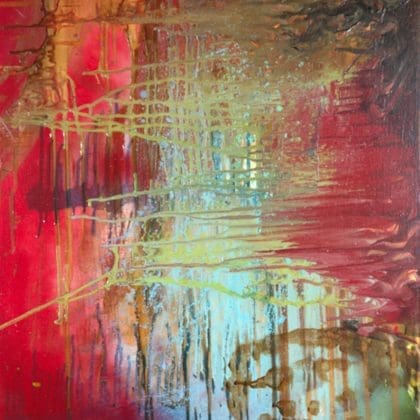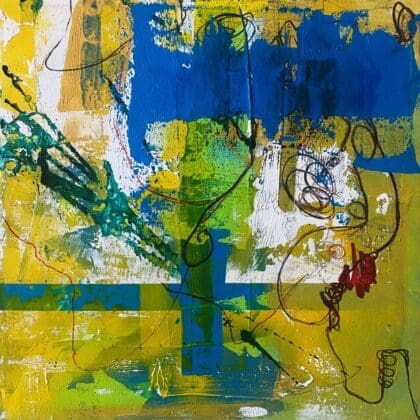As an artist, relying solely on the sale of original works can be challenging, especially in fluctuating markets. Diversifying your income streams not only helps stabilize your finances but also allows you to reach a broader audience. In this article, we’ll explore various ways artists can generate income beyond their original art pieces, offering practical ideas you can implement today.
1. Explore Print Sales
Selling prints is one of the most accessible ways for artists to expand their income. By offering reproductions of your original works, you can appeal to a wider audience who may not be able to afford the original piece.
A. Types of Prints to Consider
Giclée Prints: High-quality digital reproductions that preserve the colors and details of your original artwork.
Limited Editions: Offering a set number of prints creates a sense of exclusivity.
Posters and Art Cards: More affordable options that can attract casual buyers.
B. Platforms for Selling Prints
Etsy: A user-friendly platform for selling art and crafts.
Society6: A print-on-demand service that handles production and shipping.
Your Own Website: Set up an e-commerce section on your website to sell directly to customers.
2. Offer Art Classes and Workshops
Sharing your skills and knowledge with others can be both fulfilling and lucrative. Hosting classes allows you to engage with your community while earning additional income.
A. Class Ideas
In-Person Workshops: Offer hands-on sessions at local community centers or studios.
Online Courses: Use platforms like Skillshare or Teachable to reach a global audience.
Private Lessons: Provide personalized instruction for students of all levels.
B. Marketing Your Classes
Social Media Promotion: Use Instagram and Facebook to showcase your work and announce upcoming classes.
Collaborate with Local Businesses: Partner with coffee shops or art supply stores to host events.
Email Newsletters: Keep your subscribers informed about new classes and special promotions.
3. Create Merchandise
Transforming your artwork into various products can be a fun and profitable venture. Merchandise allows your art to reach new audiences while providing additional income.
A. Types of Merchandise to Create
Clothing: T-shirts, hoodies, and tote bags featuring your designs.
Home Goods: Items like mugs, pillows, and prints that showcase your art.
Stationery: Notebooks, greeting cards, and calendars featuring your artwork.
B. Platforms for Merchandise Sales
Redbubble: A print-on-demand service that offers various products for artists.
Zazzle: Customize a wide range of items and set your own profit margins.
Your Own Store: Create an online shop on your website using e-commerce plugins.
4. Engage in Commissions and Custom Work
Commissioned work can provide a steady income stream while allowing you to showcase your artistic talents.
A. Types of Commissions
Portraits: Create custom portraits for individuals, families, or pets.
Murals: Offer to paint murals in homes, businesses, or public spaces.
Bespoke Pieces: Work with clients to create one-of-a-kind pieces that reflect their tastes and preferences.
B. Promoting Commissioned Work
Showcase Previous Commissions: Share photos of your commissioned pieces on your website and social media.
Use Testimonials: Encourage happy clients to share their experiences and promote your work.
Create a Commission Page: Dedicate a section of your website to explain your commission process and pricing.
5. Participate in Art Fairs and Markets
Art fairs and markets provide fantastic opportunities to showcase and sell your work directly to the public.
A. Benefits of Participating
Direct Sales: Meet potential buyers face-to-face and sell your work on the spot.
Networking Opportunities: Connect with other artists, collectors, and art enthusiasts.
Market Research: Gauge public interest in your work and gather feedback.
B. Tips for Success at Art Fairs
Prepare Your Booth: Invest in professional displays to highlight your work effectively.
Engage Visitors: Be approachable and ready to share your story and process.
Offer a Variety of Price Points: Include both original pieces and prints or merchandise to cater to different budgets.
Conclusion: Take Action and Diversify Your Income!
Diversifying your income as an artist not only enhances your financial stability but also opens up new creative avenues. By exploring print sales, offering classes, creating merchandise, engaging in commissions, and participating in art fairs, you can build a robust portfolio of income streams that supports your artistic journey.
Now it’s time to take action: Choose one or two ideas from this guide and start implementing them today! Whether you create prints of your work, schedule your first workshop, or set up an online store for merchandise, every step you take will bring you closer to a more diversified and sustainable art career. Embrace the opportunities that lie ahead—your artistic potential is limitless!
Artist income diversification beyond original art.
Last updated on September 9, 2024Explore multiple revenue streams for full-time artists. From print-on-demand to teaching workshops, learn how to build a sustainable career beyond selling original artworks.
↜ back to all journal entries
Latest Articles
for artists
[category_posts category=”creators”]
for collectors
[category_posts category=”collectors”]
for collaborators
[category_posts category=”collaborators”]




